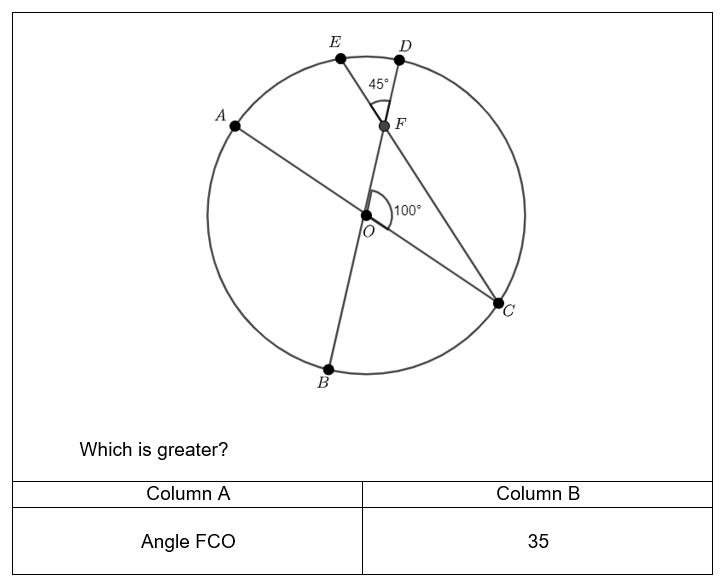The SCAT test is an exciting opportunity for children to qualify for gifted programs like the Johns Hopkins Center for Talented Youth (CTY).
Helping your child prepare can make a big difference in their confidence and performance.
Mastering the test format and practicing with the right materials strengthens reasoning skills and sets them up for success.
Preparation is not just about getting a higher score; it’s about building skills and self-assurance that will benefit your child beyond the test.
This guide is here to walk you through helpful tips, sample questions, and practical strategies. Let’s give your child the tools they need to shine.

Hey there! Do you have a question about the test or our practice package? Email me at roman@staggingapps.website. I'm here to help your child succeed 🙂
The Johns Hopkins assessment for gifted students evaluates verbal and quantitative reasoning abilities, pushing participants to perform above their grade level. The test includes two main sections:
Verbal Reasoning: This section focuses on analogies, challenging students to recognize relationships between word pairs. It assesses vocabulary, word knowledge, and reasoning skills.
Quantitative Reasoning: This part involves comparing two mathematical quantities to determine if one is greater, lesser, or if they are equal.
Each section has 55 questions and a time limit of 22 minutes, making the overall test fast-paced and lasting about an hour.
Students can take an optional 10-minute break between the two sections to rest and prepare for the next part.
Test appointments are scheduled for about 90 minutes, including setup and break time.
This advanced reasoning exam tests students using specific question formats in both verbal and quantitative sections. Familiarity with these formats helps improve performance.
In this section, students solve analogy questions that require identifying relationships between word pairs. They must choose the option that best matches the given relationship.
runway : airplane ::
A. field : farmer
B. harbor : ship
C. pond : fish
D. bench : Carpenter
The correct answer is (B) harbor : ship.
A “runway” is a designated location for an “airplane,” just as a “harbor” is a designated location for a “ship.”
The other choices are incorrect because:
A. field : farmer – A field is worked by a farmer, but it is not a designated location for them.
C. pond : fish – A pond is a natural habitat for fish, not a designated location.
D. bench : carpenter – A bench is a tool or workspace, not a designated location for carpenters.
watt : power ::
A. mile : current
B. volt : mass
C. joule : heat
D. pascal : pressure
The correct answer is (D) pascal : pressure.
A watt is a unit used to measure power, just as a pascal is a unit used to measure pressure. Both describe unit-category relationships.
The other choices are incorrect because:
A. mile : current – A mile measures distance, not current.
B. volt : mass – A volt measures electric potential, not mass.
C. joule : heat – A joule measures energy, not heat.
scraping : scratch ::
A. melting : ice
B. climbing : height
C. digging : hole
D. laughing : happiness
The correct answer is (C) digging : hole.
Scraping causes a scratch, just as digging causes a hole. Both represent direct cause-effect relationships.
The other choices are incorrect because:
A. melting : ice — Ice melts, but this is not a cause-effect relationship; it describes a process.
B. climbing : height — Climbing results in a change in height, but this is not as direct or specific as “scraping : scratch.”
D. laughing : happiness — Laughing can indicate happiness, but it is not a direct physical result like a scratch or hole.
The quantitative portion evaluates students’ ability to reason mathematically by comparing two quantities. Students decide if one is greater, if they are equal, or if there isn’t enough information to choose.
Rather than focusing on complex calculations, this section emphasizes understanding numerical relationships and applying logical thought processes.
Given a regular hexagon, which value is greater?

A. Column A is greater
B. Column B is greater
C. The two values are equal
D. Not enough information is given
The sum of the interior angles of any regular polygon is given by:
S=(n-2)×180
n-number of sides
Now solve for the interior angles of a hexagon, which has 6 sides:
S=(6-2)×180
S=4×180
S=720
For the exterior angles, it is constant that all total measurements of the exterior angles of any regular polygon is 360.
In this case, we compare 720 and 360, therefore column A is greater.
If x=3, which of the equations will be greater?

A. Column A is greater
B. Column B is greater
C. The two values are equal
D. Not enough information is given
When we substitute the value of in each equation, we will have
(Column A)
2x+5=?
2(3)+5=6+5=11
(Column B)
3x+2=?
3(3)+3=9+2=11
Therefore, the two values are equal.

A. Column A is greater
B. Column B is greater
C. The two values are equal
D. Not enough information is given
The unknown value is the measurement of the angle FCO.
We have the angle FOC as 100 and the other angle which is an interior is OFC, which is also unknown.
Now, the angle EFD measures 45. Since EFD and OFC are vertically opposite angles, then it means that these angles are equal. This means that OFC also measures 45.
We have two out of three unknown sides, which is why we could solve for the remaining side considering the interior angles of a triangle sum up to 180.
180=∠FCO+∠FOC+∠OFC
180=∠FCO+100+45
180=∠FCO+145
∠FCO=180-145
∠FCO=35
Since the measurement of angle FCO is 35, compared to the column B which is also 35, it means the values are equal.
Help your child prepare with a complete practice package designed to maximize their performance on the SCAT test.
The Elementary & Intermediate Levels Will Be Available in the Summer of 2025
The School and College Ability Test evaluates students using above-grade-level material, challenging them with concepts typically aimed at older peers. This approach identifies gifted learners by assessing advanced thinking and reasoning skills. The test is divided into three levels based on the student’s grade:
Students in this group tackle questions designed for 4th–6th graders. Both the verbal and quantitative sections emphasize higher-level reasoning and knowledge, encouraging younger students to think critically and expand their understanding.
At this level, the test features material aimed at 6th–9th graders. Verbal questions require a stronger command of vocabulary and reasoning, while quantitative tasks involve more complex arithmetic and problem-solving challenges.
The Advanced level assesses students with content meant for 9th–12th graders. Verbal tasks include complex analogies and abstract reasoning, while quantitative questions demand advanced mathematical comparisons and higher-order thinking.
Understanding how scores are determined is essential for interpreting your child’s performance and evaluating their eligibility for gifted programs like the Johns Hopkins Center for Talented Youth (CTY). The scoring system combines raw and scaled scores to provide a complete assessment.
Students also receive a percentile rank, which compares their performance to older students. For example, a 2nd grader’s results are compared to those of 4th and 5th graders. A percentile rank of 75% indicates that the student outperformed 75% of these older peers.
Parents receive a detailed score report after the test. It includes raw and scaled scores, as well as percentile rankings for both sections.
Gifted programs, including the Center for Talented Youth, typically require students to rank in the top 5–10% of their age group to qualify. These reports provide clear insights into eligibility and areas for improvement.
Check our in-depth SCAT scores guide to see which specific scores your child needs to qualify for Johns Hopkins CTY.
Registering is the first step toward helping your child qualify for advanced academic programs, such as the CTY. The process is simple but requires careful attention to ensure accuracy.
To get started, visit the Johns Hopkins CTY website or the registration portal for other participating gifted programs and follow these steps:
Test Fees: For U.S. students, the registration fee is typically $60. Fees for international students vary, so check the official registration portal for the most accurate pricing based on your location.
Scheduling: The test is available year-round. If taking the test at a Prometric center, you can schedule through their website after completing registration with CTY. For at-home testing, scheduling is managed directly through your online account.
Required Documents: You may need to provide proof of your child’s age, such as a birth certificate, along with other identifying details during registration. Having these documents ready will streamline the process.
Visit our step-by-step Johns Hopkins CTY registration guide for a smooth application process >>
Effective preparation is key to performing well on this advanced academic assessment. Using targeted strategies and reliable resources can boost your child’s confidence and improve their chances of success.
The best preparation involves tools and materials tailored to the test. Here are some valuable options:
Visit our SCAT Advanced Practice for the most comprehensive prep resources available online.
Since the test is divided equally between verbal and quantitative sections, it’s important to dedicate study time to both:
Encourage alternating study sessions between the two sections to ensure balanced preparation. Timed practice tests are especially effective for building confidence under exam conditions.
Help your child steer clear of these common pitfalls:
With the right strategies and consistent practice, your child will feel more prepared and confident on test day.
If your child performs well in school, particularly in math and language arts, and thrives when given more advanced material, they may be ready for the test. Practicing with sample questions is a good way to evaluate their readiness and comfort with the test format.
There’s no formal “pass” or “fail” for this advanced reasoning test. It’s used to measure a child’s readiness for gifted programs. If your child doesn’t meet the score requirements for a program like CTY, they can retake the test. However, students are allowed to take the test only twice per academic year, meaning they can retake it once. Retakes must be requested, meaning your child will not be able to retake the test immediately. It gives them time to prepare before trying again.
Test scores are typically valid until the student reaches the next test level (Elementary, Intermediate, or Advanced). For example, a score at the Elementary level is valid until the student reaches the Intermediate level.

Sharpening your child's skills with lifelike practice for gifted tests and school exams.
© 2025 GiftedReady | HTML Sitemap